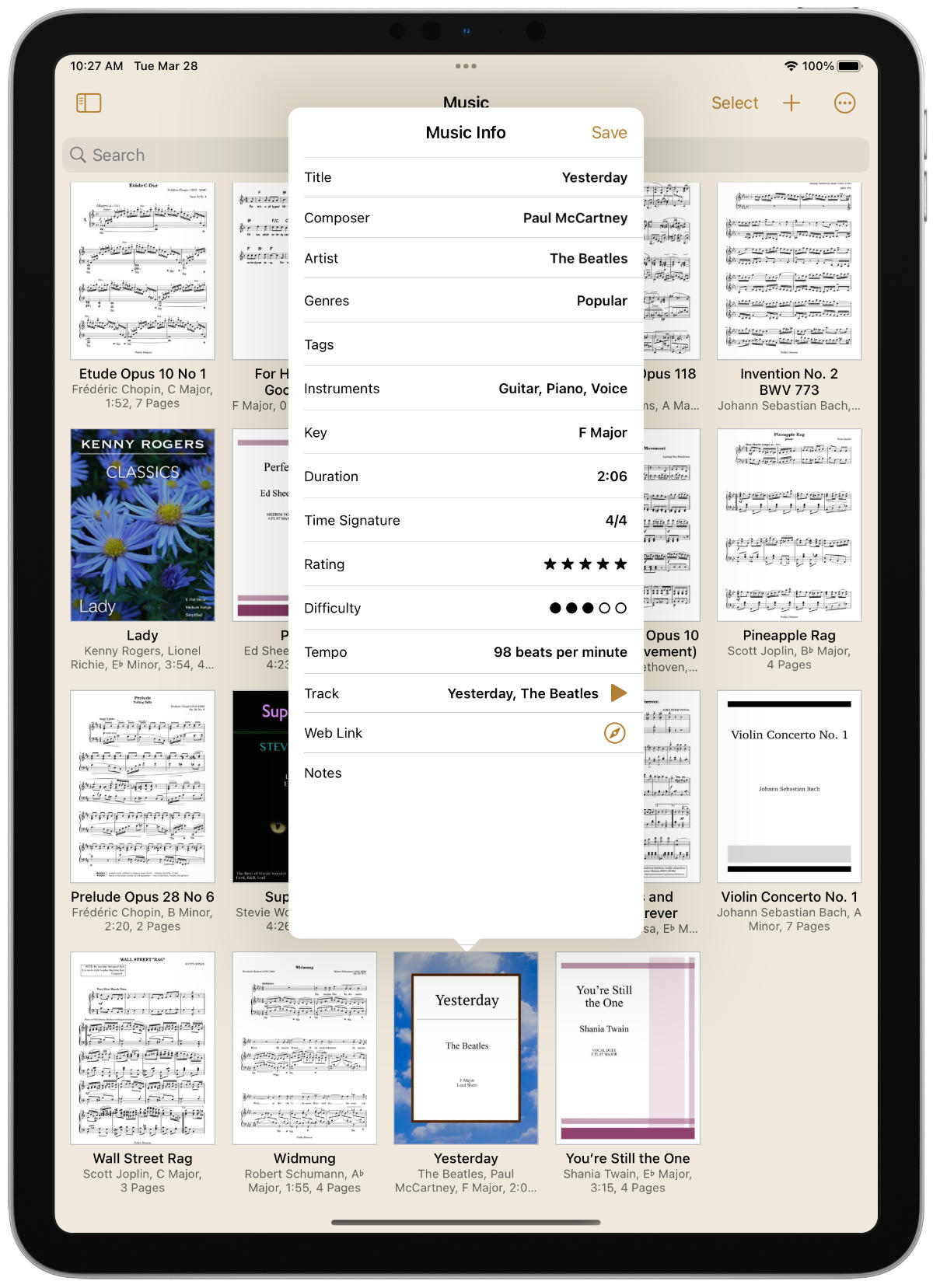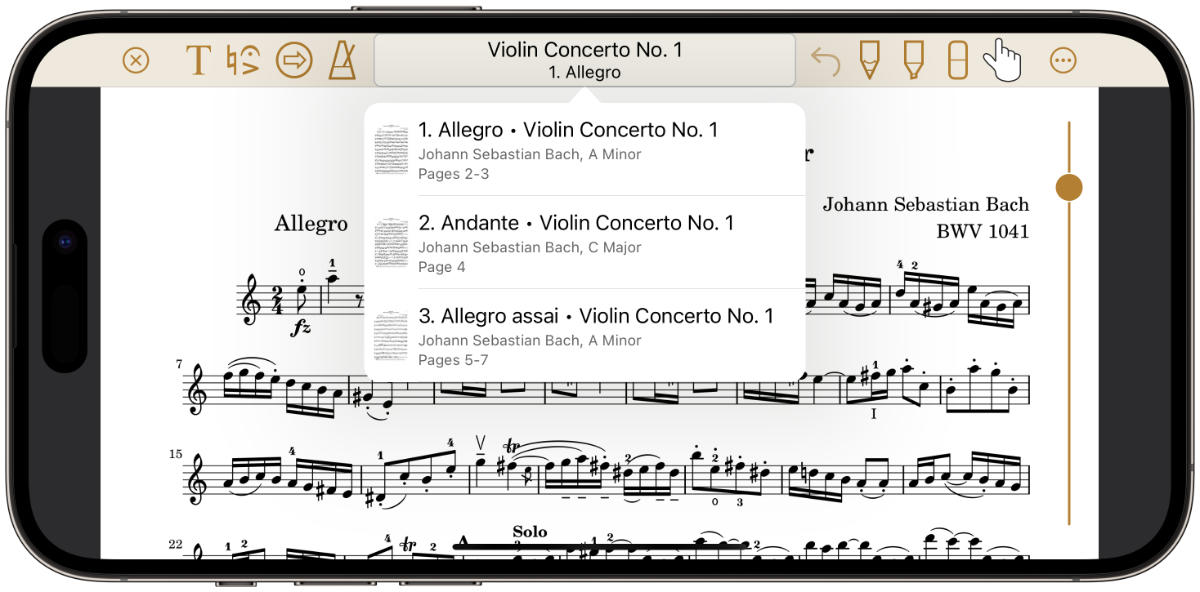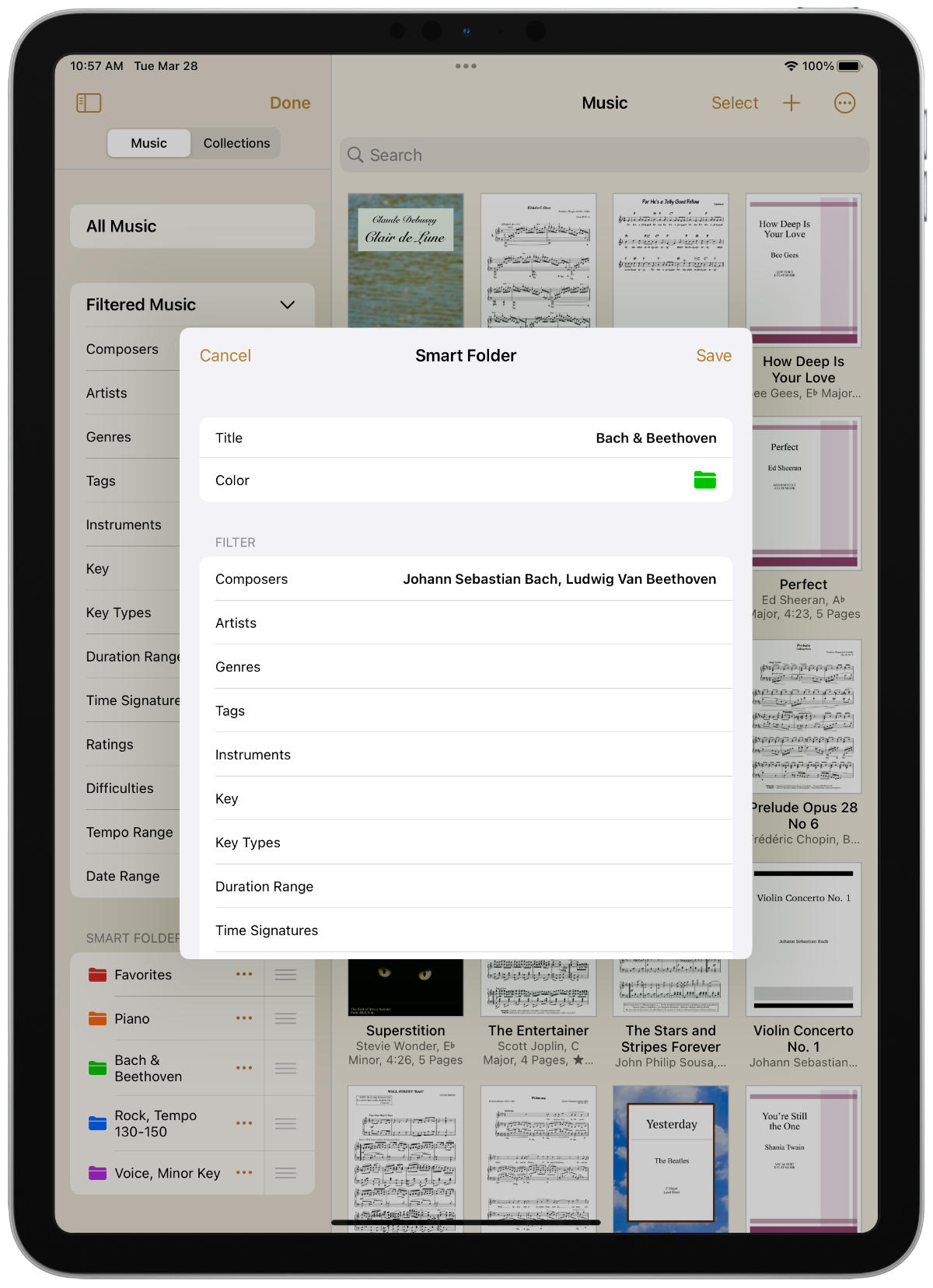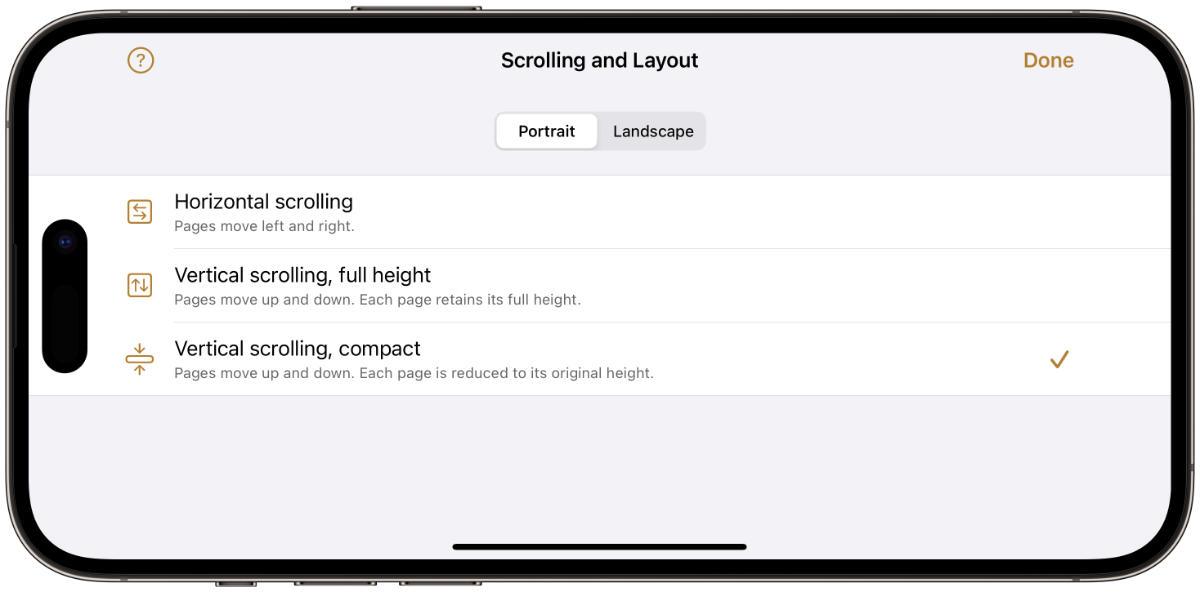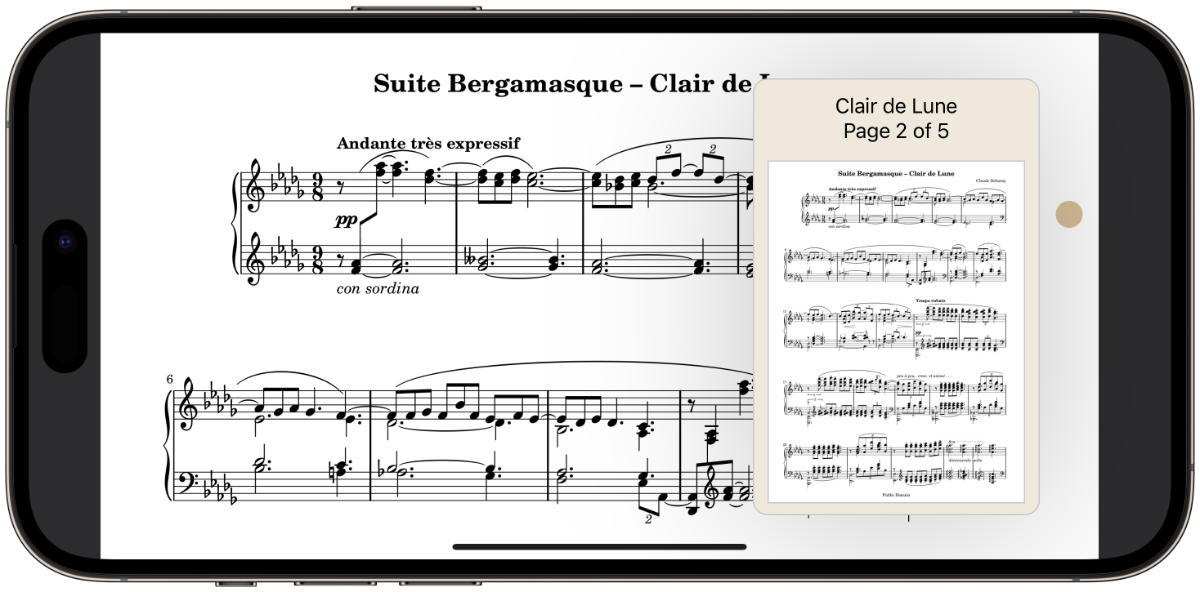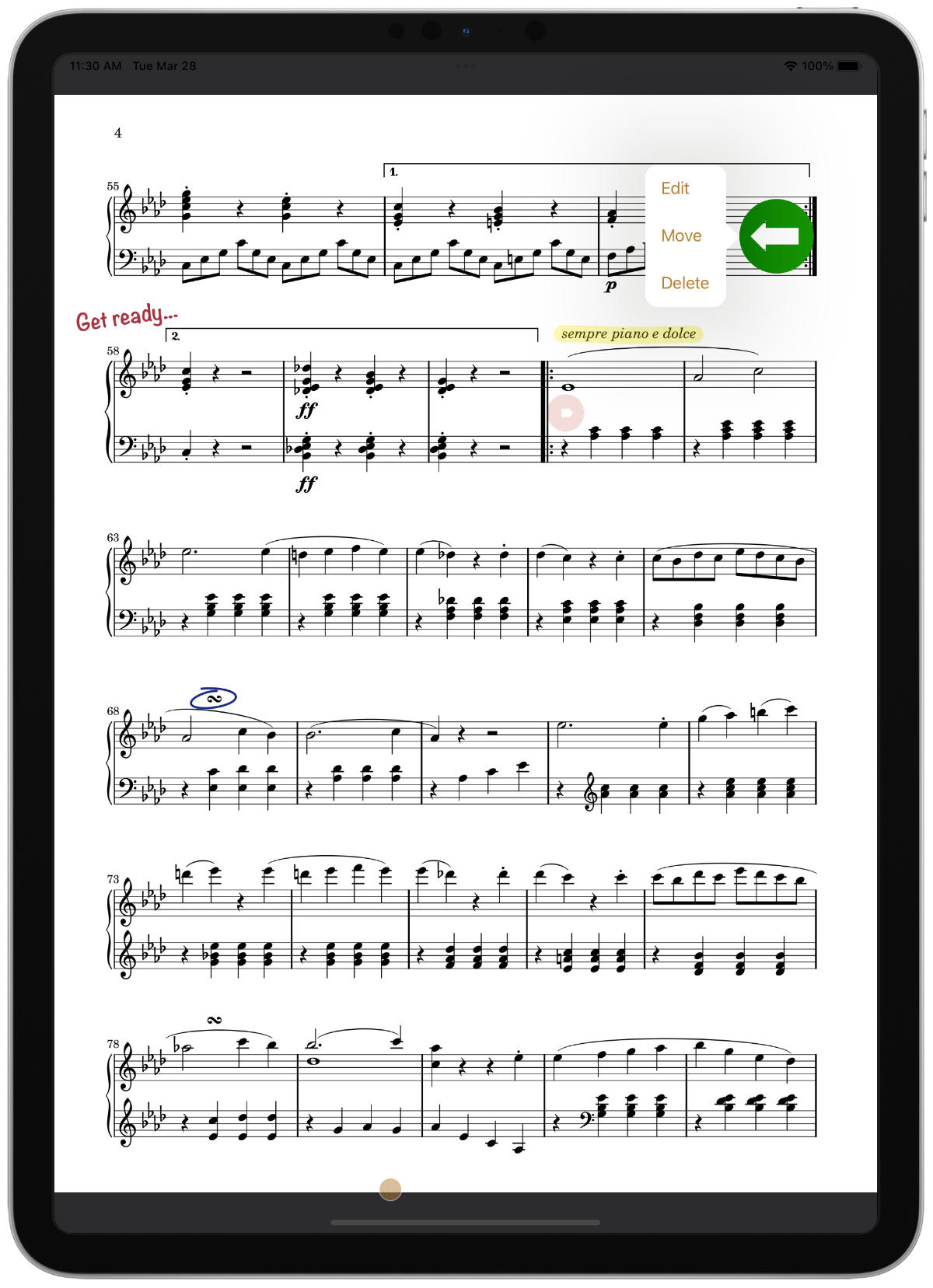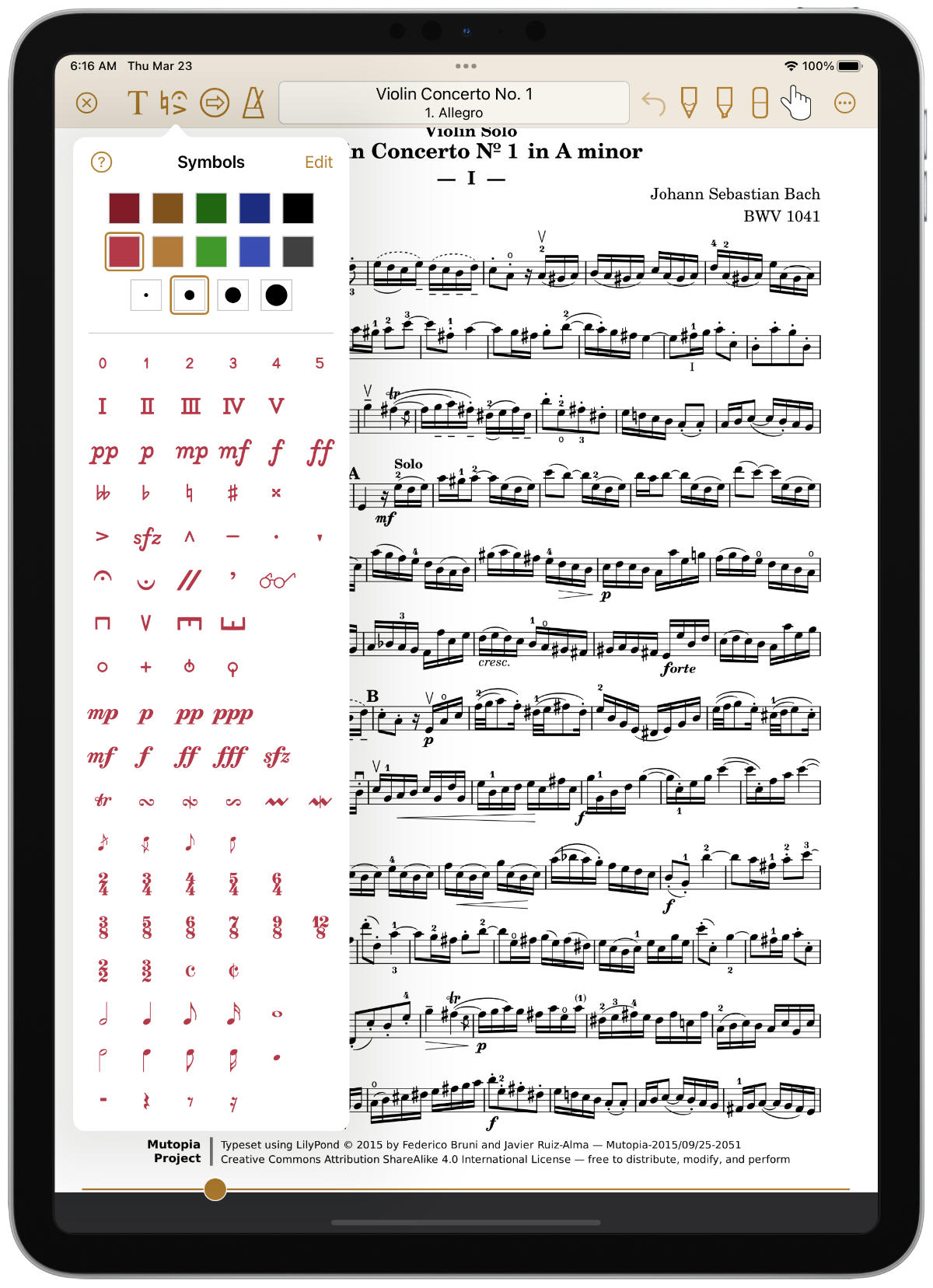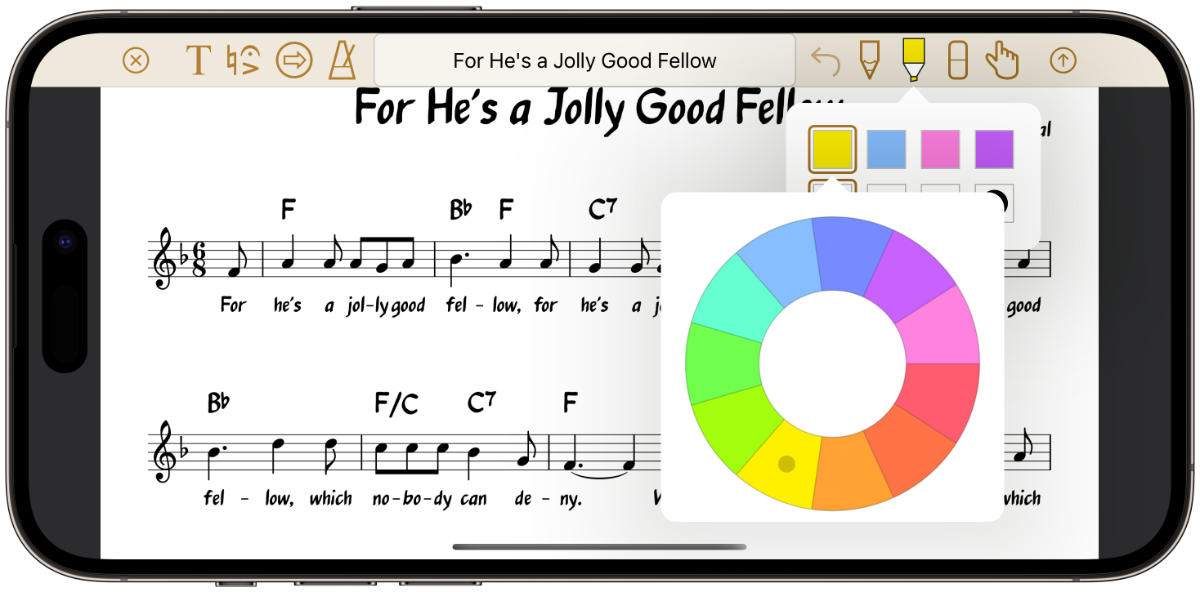Paperless Music does not collect or share any personal information, and unlike many apps, no analytics services are used to track your usage of the app. The music, collections, and audio tracks that you add are not shared with anyone, unless of course you choose to share them using the app’s share functionality.
If you choose to enable camera access and your device has a TrueDepth camera, facial gestures can be used to observe the movements of your head and face to trigger actions like turning the page. Paperless Music does not log, store, or share the information coming from the camera in any way.
If you choose to enable microphone access, audio tracks can be recorded and the tuner can hear the pitch.
If you choose to enable Apple Music access, audio tracks can be linked to and played back.
If you choose to enable local network access, Second Screen can connect two devices, allowing you to see more of your music.
Apple may collect data about your usage of their products, including usage specific to Paperless Music. Your data may also be backed up by Apple and stored on their servers. Apple’s policies govern their collection and usage of your data. You can learn more about their policies by visiting:
https://www.apple.com/legal/privacy/en-ww/

